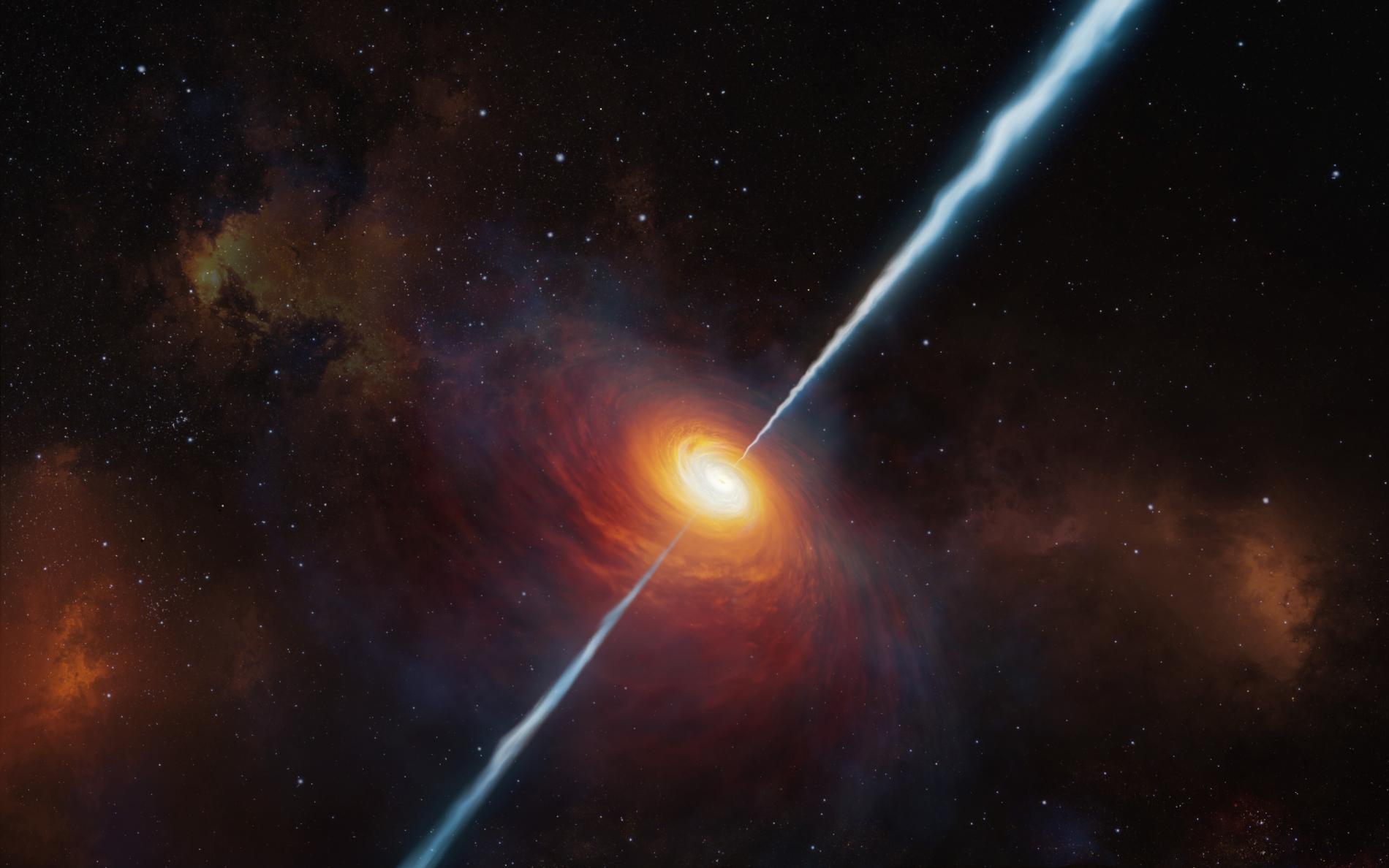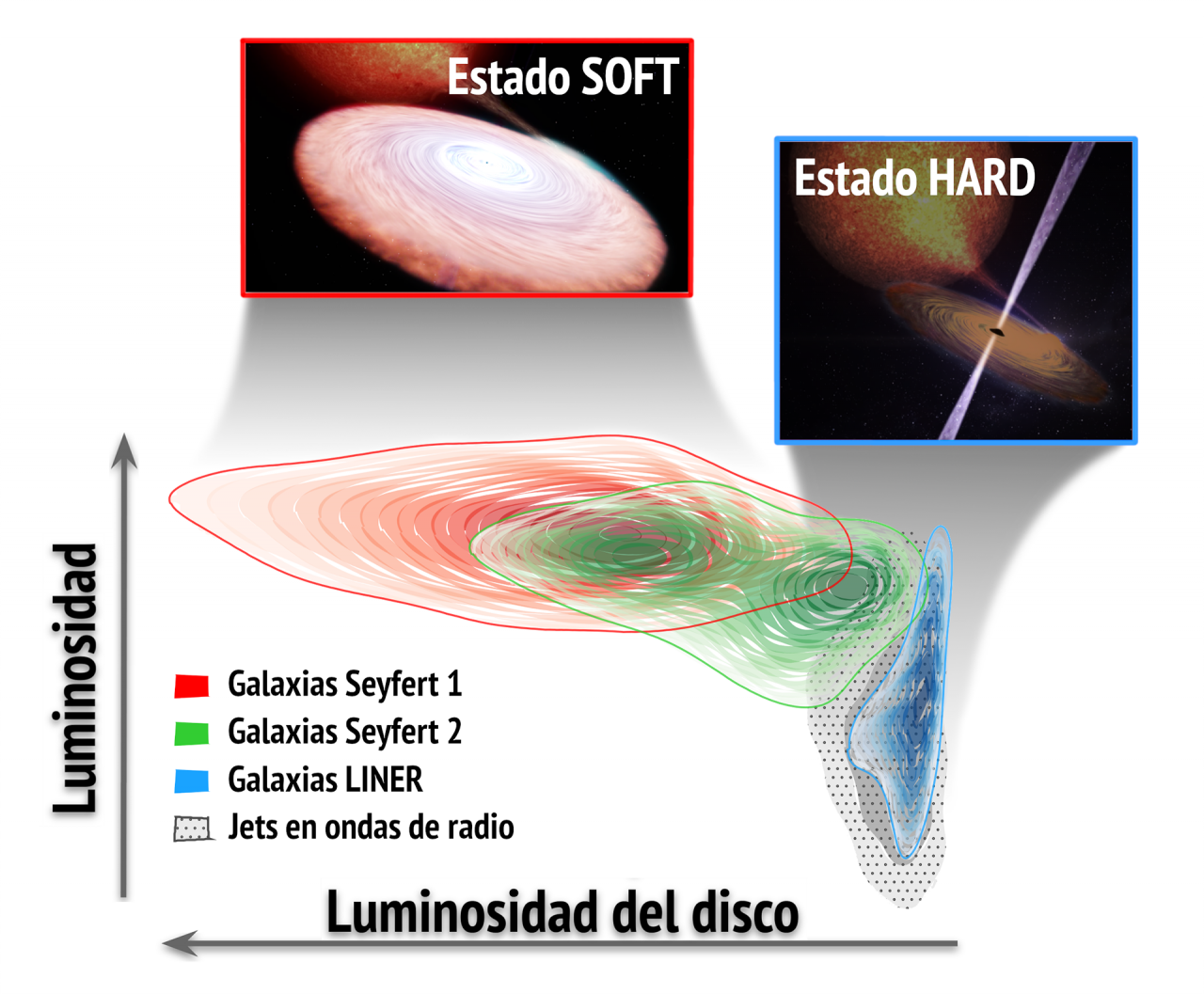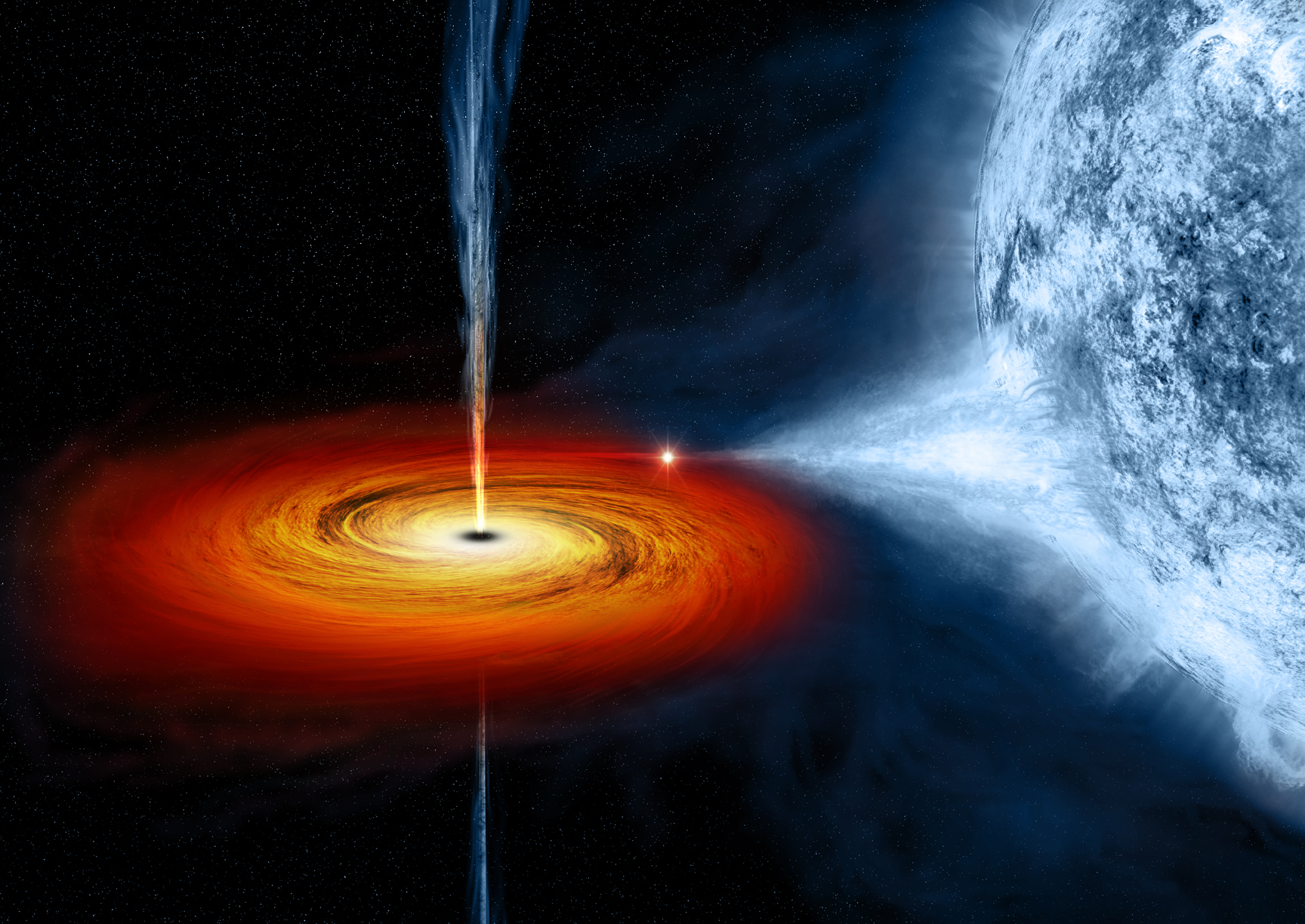Not all active galaxies are the same: infrared observations reveal two distinct families
The work is led by Enrique Pérez Montero, researcher at the Instituto de Astrofísica de Andalucía (IAA-CSIC), who, after losing his sight in the course of his scientific career, studies the intricacies of the cosmos through sound
The research focuses on the use of the infrared range to study active galaxy nucleus, considered among the most energetic objects in the universe.
Active galactic nuclei (AGN) are areas at the centre of certain galaxies where a supermassive black hole releases an enormous amount of energy by sucking in the matter around it. These nuclei can influence the evolution of entire galaxies through their ability to drag in chemical elements and generate powerful winds that affect the galactic environment. In addition, these objects are localised and hidden behind dense dust clouds, which makes it difficult to study them directly.
‘The infrared range is especially useful because it is able to penetrate the dust clouds that cover many of these phenomena and reveals energetic transitions that correspond to ions only present when the radiation field is very intense, replacing direct detection in X-rays or in the ultraviolet,’ explains Enrique Pérez Montero, researcher at the IAA-CSIC and head of the study.
The study - published in the journal Astronomy & Astrophysics and led by the Instituto de Astrofísica de Andalucía (IAA-CSIC), in collaboration with the Centro de Estudios de Física del Cosmos de Aragón (CEFCA) - reveals that active galaxy nuclei, hitherto considered a homogeneous group, actually split into two distinct types when analysed in the infrared. This suggests that the black holes that feed them may go through different phases of energetic evolution.

Artist's impression of an active galactic nucleus (AGN). Credits: ESO/M. Kornmesser
ACTIVE GALAXIES UNDER THE INFRARED LENS
The study describes how extremely violent phenomena occurring in galaxies millions of light-years away can be studied by looking at the traces they leave in the gas that surrounds them. This gas acts as a kind of messenger: it absorbs the most energetic radiation - which we cannot detect directly - and re-emits it at more accessible wavelengths, such as infrared or visible light. In doing so, scientists can reconstruct what is going on at the heart of these galaxies, without needing to ‘see’ it directly, which is key to understanding how they have evolved over time.
Although the near- and mid-infrared range, which is invisible to the human eye, is key to studying the interior of active galaxies, it also presents a major difficulty: much of this radiation cannot pass through the Earth's atmosphere, as it is absorbed by water vapour and other molecules. Therefore, until the arrival of space telescopes such as Spitzer (NASA), Herschel (ESA) or, more recently, the James Webb Telescope (JWST), this information could not be used in an exhaustive way to explore the phenomena occurring in the interior of these galaxies.
The Instituto de Astrofísica de Andalucía (IAA-CSIC) has developed a new technique to analyse the radiation emitted by active galaxy nuclei (AGN). This is based on the use of certain infrared lines that are not only able to pass through the dense dust clouds, but also allow us to study the most energetic transitions that take place in their environment.

Supermassive black holes in active galaxies show accretion states similar to those observed in stellar-mass black holes in our galaxy. Credit: Teo Muñoz Darias/Juan A. Fernández Ontiveros
Using this method, the team has found that active galactic nuclei are grouped into two distinct families: one emits a harsher, but less efficient ionising spectrum, while the other has a softer, brighter spectrum. Both groups have very similar populations and, according to the research team, may represent two distinct evolutionary phases between which the transition occurs relatively quickly, as evidenced by the scarcity of galaxies with intermediate characteristics. "These two states could correspond to different modes of energy efficiency of the accretion disc, which is the region where matter emits energy before falling into the gravity well of the hole," says Pérez Montero.
According to Juan Antonio Fernández Ontiveros, CEFCA researcher and co-author of the study, the active nuclei of galaxies could behave in a similar way to certain star systems known as X-ray binaries, in which one of the stars is a black hole. "In both cases we observe a kind of cycle: there is a phase in which the material falling towards the black hole emits little light, and another phase in which that emission becomes much brighter," he explains.
In the less bright phase, the disc of material surrounding the black hole is further away and generates a cloud of very energetic electrons, which can even produce a high-speed jet of particles. In the brighter phase, the disc moves closer to the black hole, increases in luminous intensity, but emits less high-energy radiation. "As the centre of these galaxies is enveloped in large dust clouds, we can only study these cycles indirectly, through infrared radiation," adds Fernández Ontiveros.

Artist's impression of Cygnus X-1, a X-Ray binary star system containing a black hole. Credits: NASA
LISTENING TO THE UNIVERSE
Enrique Pérez Montero studies the mechanisms of energy emission produced by massive star formation events and by active galaxy nuclei, as well as their interaction with the interstellar medium, from complete darkness. He suffers from a degenerative retinal disease called Retinitis Pigmentosa, which led him to join the ONCE fourteen years ago, but has not prevented him from continuing his research career at the Instituto de Astrofísica de Andalucía (IAA-CSIC).
As part of the adaptations needed to facilitate his work, and also with the aim of exploring new ways of making scientific information accessible, the co-author of the study, Juan Antonio Fernández Ontiveros, programmed a sonification, i.e. the translation of the data into sound. This tool allows us to listen to how the emission of an X-ray binary star - in this case, GX339-4, observed in 2007 - varies and reveals patterns that, according to the study, could also be present in the active nuclei of galaxies, albeit on a much larger scale.
- “Exploring the hardness of the ionizing radiation with the infrared softness diagram”
- https://www.aanda.org/articles/aa/full_html/2025/04/aa53276-24/aa53276-24.html
- Enrique Pérez Montero - epm@iaa.es
- Instituto de Astrofísica de Andalucía (IAA-CSIC)
- Unidad de Divulgación y Comunicación
- Amanda López – alm@iaa.es
- Emilio García – garcia@iaa.es - 649 407 445 (vía whatssap)
- Celia Navas - navas@iaa.es
- https://www.iaa.csic.es
- https://divulgacion.iaa.csic.es

